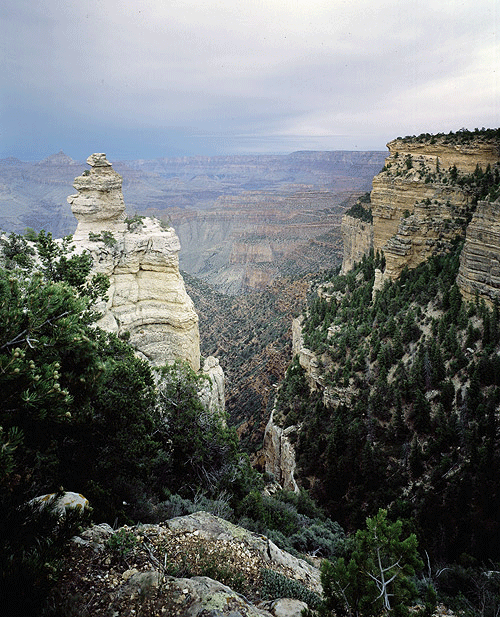How Old Is the Grand Canyon?

The Grand Canyon may be 10 million years older than we thought
by Liz Olson
Visit our Grand Canyon Slideshow.  Photo of the Grand Canyon courtesy of Carol M. Highsmith Related Links |
Until recently, the Grand Canyon, one of the most spectacular and mysterious natural wonders of the world, was thought to be about six million years old. With improved dating techniques, geologists now believe that it actually started to form some 17 million years ago.
Geologists estimated the Grand Canyon's age at six million years by using a technique called uranium-lead dating. The Grand Canyon walls are lined with a sedimentary rock called Redwall Limestone. Redwall Limestone can be seen where water levels have dropped, leaving behind deposits of calcium carbonate. Their results showed that six million years ago, a river started from the west and another from the east, carving a mile-deep canyon until they met in the middle and formed what is now the Grand Canyon and the Colorado River.
Dating the Grand Canyon
Uranium-lead dating allows researchers to determine the age of mineral deposits hundreds of millions of years old. Over time uranium, which can be found in many mineral deposits, decays into lead. Uranium has a half life of 4.5 million years, which means that only half the original amount of uranium in a rock is left after 4.5 million years. Geologists can collect mineral deposits and find their age by measuring the amount of lead found in the rocks. The amount of lead tells how long the uranium has been decaying. The mineral deposits collected from the Grand Canyon walls reveal when and how fast water levels dropped.
New Research
In 2008, Victor Polyak led a team of geologists from the University of Mexico to conduct new research on the Grand Canyon. They also tested minerals that line the canyon walls at different heights in order to track water levels, which allowed them to find the rate at which the canyon deepened. Polyak and his team, however, rafted, hiked, and climbed to access caves that dot the canyon's walls. Many of the caves were difficult to reach—some were hundreds of feet high. In the caves they found mineral deposits that contain larger amounts of uranium.
What are mammillaries?
The uranium-rich mineral deposits are called mammillaries. Mammillaries are mineral deposits that form at the top of the water table and provide a timeline of the river and canyon’s history. Mammillaries, often called "cave clouds," form just under the surface of water that has a high calcium-carbonate concentration. They leave behind formations, often ring-shaped as seen in trees and stalagmite, on existing rocks.
New birth date for the Grand Canyon
Polyak and his team collected mammillaries from nine sites in the Grand Canyon that were at a much higher elevation than the current water level and then used uranium-lead dating to find the age of the Grand Canyon. They found that the Grand Canyon eroded much slower on the western end than was previously thought, suggesting it is much older than six million years. Findings also showed that instead of one large river, small streams caused the erosion and they joined to make one large river, the Colorado River which runs through the Grand Canyon today, stretching 277 river miles long, up to 18 miles wide, and a mile deep.
- More from United States Geography







